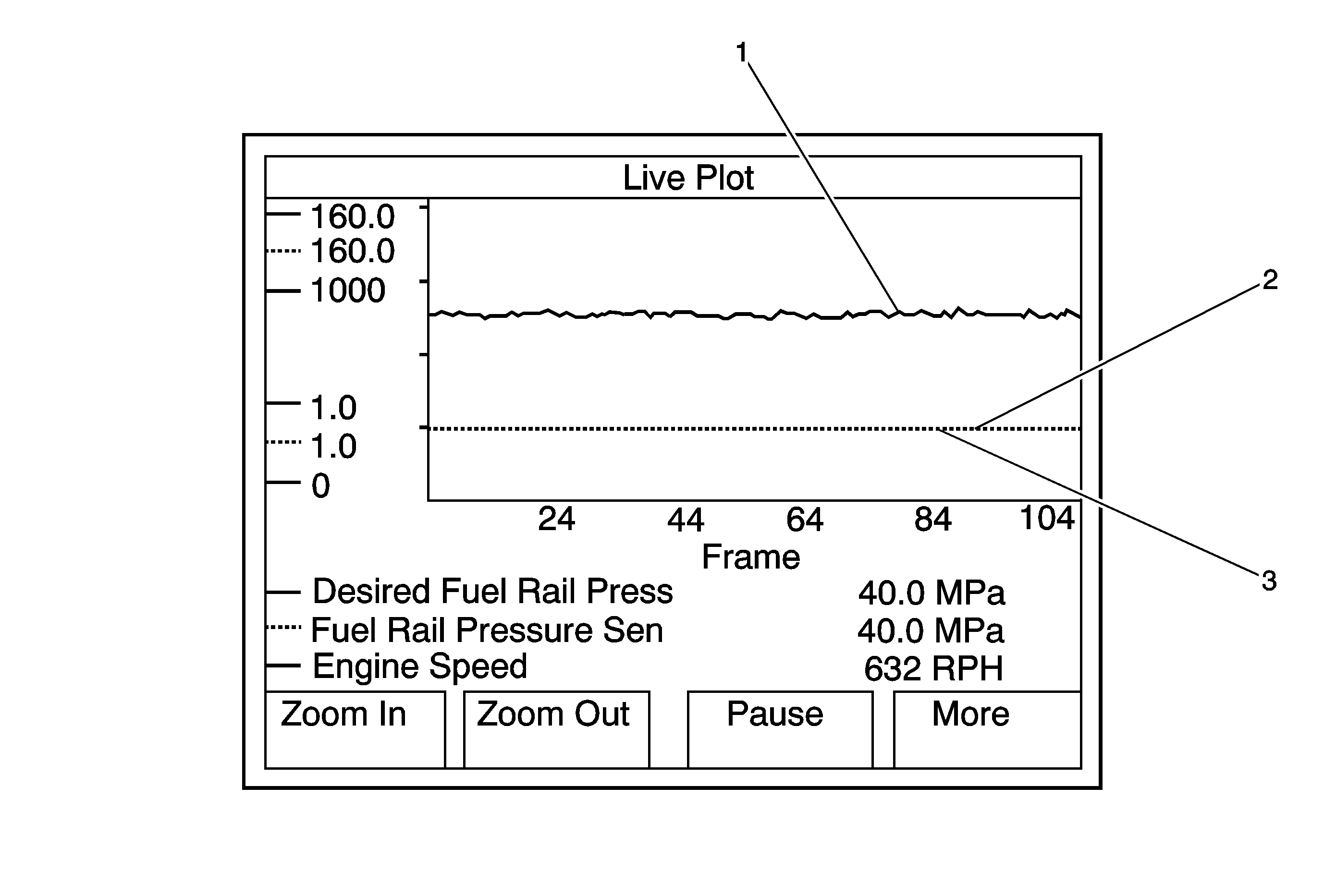For 1990-2009 cars only
The Fuel Pressure Regulator graphing procedure offers valuable information on regulator performance by comparing desired and actual fuel rail pressure. An almost perfect comparison between fuel rail pressure and desired fuel rail pressure is found on a fairly new, low mileage engine. A minor ripple is acceptable behavior for the fuel rail pressure regulator and is seen on high mileage engines. A "shark tooth" fluctuation in fuel rail pressure indicates a sticking fuel pressure regulator.
- Set up the following Min/Max ranges for graphing the fuel rail pressure on the scan tool.
- Start and idle the engine.
- Observe the live plot for sharp changes or shark tooth pattern in the Fuel Rail Pressure while performing the following actions:
- If there is a violent fluctuation in the Fuel Rail Pressure , as seen in the surging graph below, replace the fuel pressure regulator. Refer to Fuel Pressure Regulator Replacement .
| • | Engine Speed Min/Max range is 0-1,000 RPM. |
| • | Fuel Rail Pressure Min/Max range is 1-160 MPa. |
| • | Desired Fuel Rail Pressure Min/Max is 1-160 MPa. |
| • | Idling the engine |
| • | Shifting the transmission from Park to Drive and back to Park |
| • | Turning the steering from left stop position to right stop position |
| • | Turning the air conditioning ON and OFF |
Good Fuel Pressure Regulator Graph, 0 Miles

